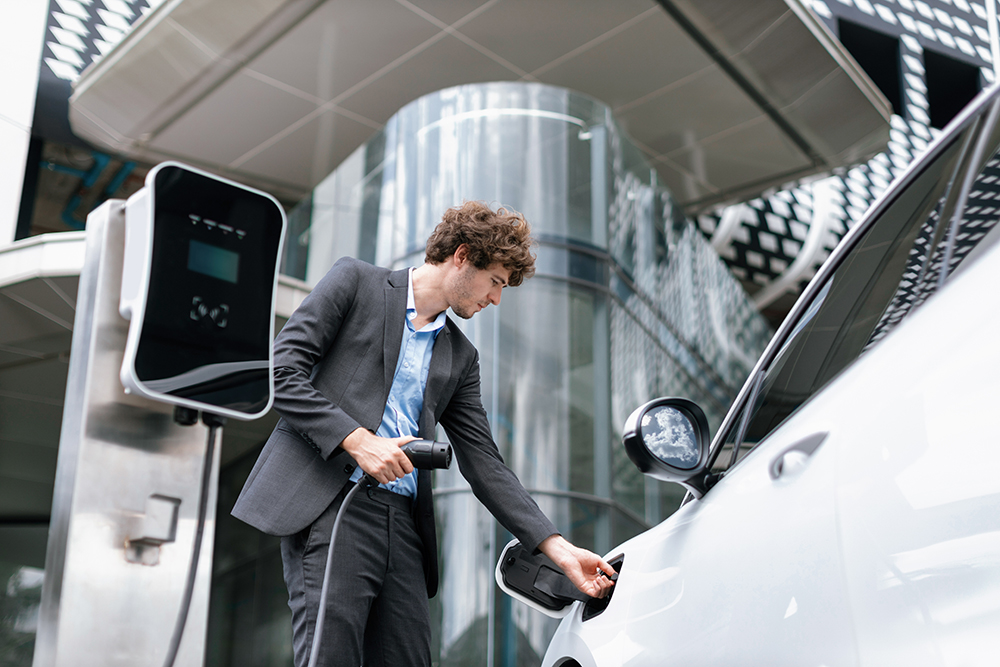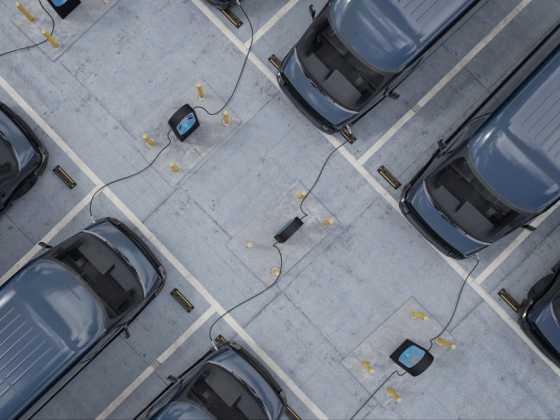Regulations for a user friendly charging experience

The government has published draft regulations for public electric vehicle charge points, which stipulate better reliability, clearer pricing, contactless payments and open data. So what does this mean for fleet drivers?
At the end of July 2023, there were 45,737 electric vehicle charging points across the UK, across 26,805 charging locations, according to Zapmap. This represents a 40 per cent increase in the total number of charging devices since July 2022.
Public charge point installation is rolling out at a rapid rate. This will help the government meet its ambition to have 300,000 public chargers to be available by 2030.
But the number of chargepoints is not the only challenge with the public electric vehicle charging infrastructure. Many drivers report issues such as chargepoints not working, being occupied, and having to download multiple apps in order to register and pay for a charge.
Indeed, a CTEK survey by YouGov found that half of UK electric vehicle drivers encounter a broken public charge point when they arrive for a charge 25 per cent of the time.
The survey also reveals that more than half (52%) of UK EV drivers have to wait to use a public charger, with delays reported for one in every four visits. What’s more, almost one in four (23 per cent) have five or more EV charging apps on their phone and one in three (34 per cent) have three or more RFID tags or cards.
In order to address these issues, and following a public consultation, the government has published draft regulations for public electric vehicle charge points, which aim to improve the charging experience for electric vehicle drivers.
Priorities in the regulations include better reliability, clearer pricing, contactless payments and open data.
These are regulations are now up for debate in Parliament and expected to come into force in October/November.
Simple payments
The regulations stipulate that contactless payment must be available on all new charging stations of 8kW and above within one year from the date the new regulations come into force. This means drivers will no longer have to download different apps for different charging networks, they can simply pay for their charge with their contactless credit or debit card.
Within two years from when the Regulations come into force, payment roaming will also be mandated at all public charge points. This should ensure that a person using any charge point is able to pay to charge using a payment service provided by a
third party roaming provider. This should mean that drivers can recharge at any
public charger and pay with a single app.
From a fleet perspective, this could even be linked back to a company credit card,
making it simple to keep track of expenses.
The regulations require pricing transparency that will guarantee a consistent pricing metric across the public network. This means that charge point pricing will be clearly displayed in pence per kilowatt hour either on the charge point or through a separate device which does not require a person to have entered into a pre-existing contract with the charge point operator. The price is then not allowed to increase once the charging of the electric vehicle has commenced.
This will make it easier to compare pricing at different charge points and get best value for money. It will also make it easier to reclaim expenses as it will be clear exactly what has been paid for.
A reliable network
The regulations require that the network of rapid charge points is, on average, reliable for 99 per cent of the time during each calendar year.
A charge point operator must also provide a staffed telephone helpline available free of charge for 24 hours a day to allow people to seek assistance if there were issues using the chargepoint.
The telephone number for the helpline must be prominently displayed on or near the charge point, and the charge point operator must keep a record of every call to the telephone helpline and submit a quarterly report containing the information to the Department for Transport. The report will not, however, contain any personal data of the caller.
Regarding its reliability, the charge point operator must submit a report to the Department for Transport of its network of rapid charge points, including details on the reliability expressed as a percentage.
This requirement for reliability, plus support via a helpline, will give fleet drivers confidence when their journeys require them to charge on public facilities.
Transparent, accessible data
The regulations also state that charge point providers have to provide real-time information on their status. This transparent data will make it easier for drivers to locate a public charge point and check that it’s working.
This will give reassurance to drivers that when they turn up to a charge point, it will be working. This will also help with route scheduling as fleet managers will be able to use open data to identify charging locations with functional chargepoints.
Welcome news for drivers
Melanie Shufflebotham, co-founder & COO at Zapmap, said: “I’m very pleased that the 2023 Public Charge Point Regulations are now up for debate in Parliament – and many electric car drivers will be too.
“From easy payment through to chargers you know will work when you get to them, these are issues which have been highlighted for many years.
“Stepping back, the shift to electric vehicles is crucial if we are to meet our net zero targets. And these regulations will support this transition by boosting confidence in the public charging network.”
RAC electric vehicles spokesman Simon Williams said: “We’re pleased to see the Government has acknowledged there’s a need to improve drivers’ experience at public chargers and has now set out some clear actions to address this.
“This has the potential to reassure many more people that switching to an electric vehicle makes sense, which is vital the closer we get to 2030 when the sale of new petrol and diesel cars will end.
“Ensuring drivers only need to download and use a single app is a huge step forward from where we are today.
“We hope operators of rapid and ultra-rapid charging hubs will not just clearly display pence per kilowatt hour prices on chargers themselves but also on prominent digital signage similar to fuel price ‘totems’ which drivers are already very familiar with.
“We believe this is needed to make price comparisons easy for everyday EV drivers looking to charge up as cheaply as possible on a journey.”
Toby Poston, director of corporate affairs at the British Vehicle Rental and Leasing Association (BVRLA), said: “Public charging anxiety and frustration is one of the top reasons drivers give for not going EV, so these new measures represent a massive step in addressing them.”






